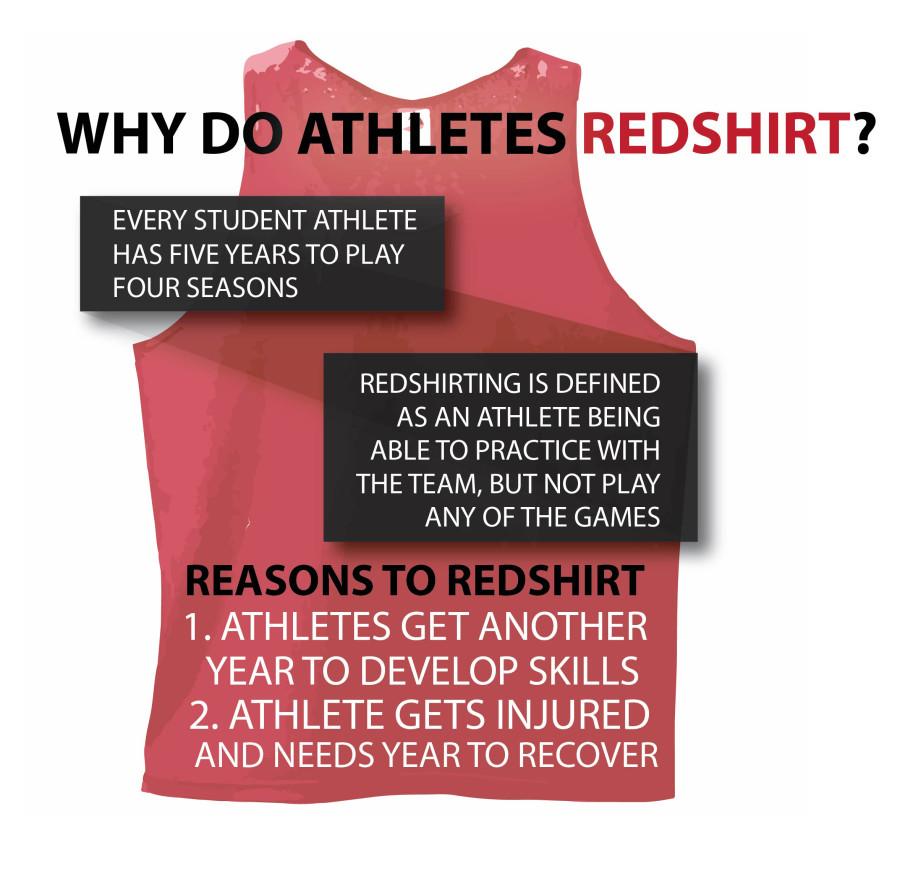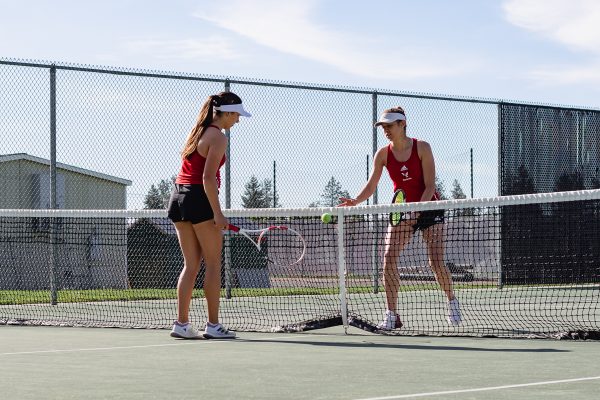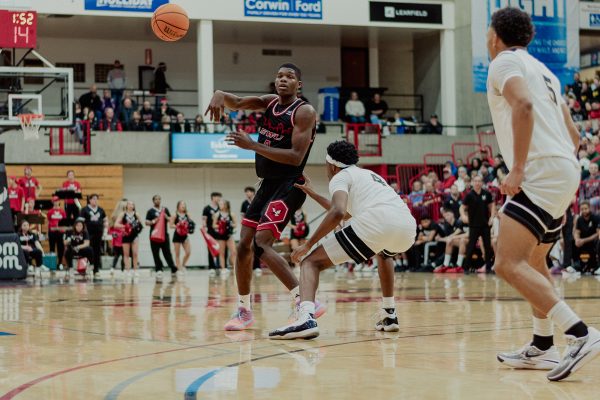Redshirting helps athletes grow on team
February 19, 2014
Women’s basketball players share their redshirt experiences
The Eastern women’s basketball team has five athletes who have redshirted and one player who is going through the experience this season.
Redshirting is defined as an athlete being able to practice with the team, but not play any of the games. Redshirting also allows athletes to increase their skills and work on their academic careers, while still being on the team.
“By NCAA rule, every student-athlete that comes through starts their five years of eligibility,” assistant athletic director for student services and compliance Joel Vickery said. Every student athlete has five years to play four seasons.
According to Vickery, a typical scenario involves freshmen coming in and redshirting right away in order to develop their athletic skills. Another scenario is when players get season ending injuries that allow them to use a redshirt year that does not count within the four years of competition.
There are also unique circumstances that happen as well. “Sometimes there’s more than one season where someone has to use a redshirt,” Vickery said. This is usually the case for injured athletes, where they need more time to recover. “If that’s all documented medically, then potentially we can apply for a sixth year.”
As far as academics go, within those years that student-athletes have to compete, they also pursue a degree as well. “We track [athletes’ academic history ] with graduation success rates, academic progress rate data, that the NCAA requires us to submit and we’re penalized if we fall below certain standards,” Vickery said.
Athletes redshirt if they need to meet certain requirements academically in order to stay in competition. The main requirement for athletes is to complete at least 72 credit hours by their third year of school.
According to Vickery, there is a ‘40,60,80 rule’ where a student athlete has to complete 40 percent of their degree during their first three years of college. By year four athletes must complete 60 percent of their degree, and finally 80 percent by year five. If athletes fall below this rule, they are ineligible to compete.
Freshman forward on the women’s basketball team, Haley Shaner is currently redshirting this year to develop her skills for next season. “Right now I’m doing extra lifting, [and] on top of that conditioning,” Shaner said. “Usually after that, I just come in and get [basketball shots] up and that’s pretty much it.”
With 15 players on the women’s basketball current roster, it is difficult to get playing time. According to Shaner, for players to use their redshirt option for development, they must talk with their coaches ahead of time.
Shaner is currently using this time to get used to the college basketball atmosphere. “You get a chance to get used to the speed of the game and what it’s like to be on the court with older girls,” Shaner said. “On top of that, you’re getting stronger, and you’re able to compete physically more and you get your confidence.”
Shaner looks at shooting and post work as areas in her game to improve for next season.
Currently in her second year on the team, forward Cece Pearl red-shirted last season. “Redshirting is a difficult experience, and it’s one of those things that you don’t know how it’s [going to] end up until the future,” Pearl said. “It’s a very positive thing academic wise as well, [because] you get one more year of academics.”
During her redshirt year last season, Pearl did extra workouts with the assistant coaches. They would put her through 30 minute workouts. “You can put in the time and effort with coaches and other redshirts to better yourself for the next year,” Pearl said.
Pearl played the post position in high school and, as a 5’11” athlete coming into college, she is smaller than the other players. So as a redshirt player last season, she focused on becoming stronger. Overall she has improved her shooting range and her basketball IQ by analyzing the game while sitting out last season.
Pearl also saw the redshirt option as a roadblock in getting to be with her teammates and building good chemistry within the team. “It’s difficult to not travel with them and not feel like you’re a part of that team,” Pearl said.
She also mentioned the adjustment players have to make when transitioning from high school to college. “This is Division I collegiate basketball, and no matter if you’re a football player or a basketball player or a soccer player, I think everyone comes from being a star in high school,” Pearl said. “So the hardest thing is having to sit out because you need to progress your skills.”







![Simmons said the biggest reasons for her success this year were “God, hard work, and trusting [her] coach and what she has planned.”](https://theeasterner.org/wp-content/uploads/2024/05/image1-1-1200x800.jpg)


![Simmons said the biggest reasons for her success this year were “God, hard work, and trusting [her] coach and what she has planned.”](https://theeasterner.org/wp-content/uploads/2024/05/image1-1-600x400.jpg)






